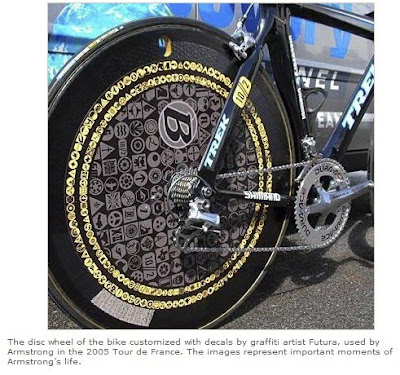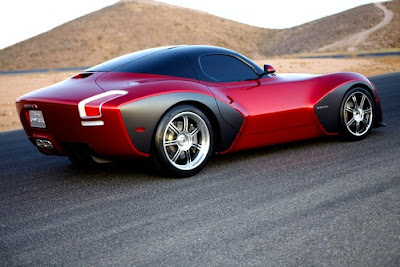 Santana was born in Autlán de Navarro, Jalisco, Mexico. His father was a mariachi violinist, and Carlos learned to play the violin at age five and the guitar at age eight. Young Carlos was heavily influenced by Ritchie ValensTijuana, the border city between Mexico and California, and then San Francisco. Carlos stayed in Tijuana but joined his family in San Francisco later and graduated from Mission High School there in 1965.[2]
Santana was born in Autlán de Navarro, Jalisco, Mexico. His father was a mariachi violinist, and Carlos learned to play the violin at age five and the guitar at age eight. Young Carlos was heavily influenced by Ritchie ValensTijuana, the border city between Mexico and California, and then San Francisco. Carlos stayed in Tijuana but joined his family in San Francisco later and graduated from Mission High School there in 1965.[2] at a time when there were very few Latinos in American rock and pop music. The family moved from Autlán de Navarro to
In San Francisco, the young guitarist got the chance to see his idols, most notably B.B. King, perform live. He was also introduced to a variety of new musical influences, including jazz, world music, and folk music, and witnessed the growing hippie movement centered in San Francisco in the 1960s. After several years spent working as a dishwasher in a diner and busking for spare change on the streets, Santana decided to become a full-time musician; in 1966, he formed the Santana Blues Band, with fellow street musicians David Brown and Gregg Rolie (bassist and keyboard player, respectively).[2]
With their highly original blend of Latin-infused rock, jazz, blues, salsa, and African rhythms, the band (which quickly became known simply as Santana) gained an immediate following on the San Francisco club scene. The band's early success, capped off by a memorable performance at Woodstock in 1969, led to a recording contract with Columbia Records, then run by Clive Davis.
read the full Carlos Santana biography @ Wikipedia.org
DAVID FRICKE for Rolling Stone Magazine 06/12/08
You were born in Mexico, your father was a mariachi violinist, and you played the violin before taking up the guitar. Did you feel torn between the old and new when you discovered electric blues?
I don't disrespect tradition. But it is not going to hold me back. John Lee Hooker, Lightnin' Hopkins and Jimmy Reed — that was something I needed. I started with those three gentlemen, because they were the ultimate in simplicity. They make it look simple. But if you try to play like John Lee Hooker or Jimmy Reed, it's not that easy.
I joined my father in the streets, playing boleros. But I had my ear on Chuck Berry, Little Richard and Bo Diddley, on B.B. King and T-Bone Walker. There was nothing plastic about those guys. They went deep, and each note carried something important. I knew, from a long time ago, the difference between notes and life. I'd rather play life than notes. It's OK to learn how to read music. It's not going to hurt you. You can go to the Berklee College of Music. But they do not teach you how to play life.
As a teenager in San Francisco, you went to many early Fillmore shows. Who were some of the guitarists you first saw there?
The same people Jeff Beck and Jimmy Page were into — Otis Rush, Buddy Guy, Freddie King and Albert King — and Michael Bloomfield and [Fleetwood Mac's] Peter Green. Even before Jimi Hendrix came out in '67, Bloomfield was hitting it hard with Paul Butterfield's band on things like
East-West. It was a different kind of blues, even for white people. When you closed your eyes, it did not sound white.
What about Jerry Garcia? He was playing almost every night all over town with the Grateful Dead.
There is something in me — my body will not let in bluegrass music. I love Merle Haggard and Buck Owens — the songwriting — and of course Willie Nelson. But there are certain kinds of music that my body doesn't allow. One is
norteño. Another is bluegrass, and Jerry's playing had a lot of that. When he did "Good Morning Little Schoolgirl" — which is more in a Buddy Guy-Junior Wells style — I was like, "OK, I can listen to that." I'm very particular. There is certain music that I just don't want to know about
[laughs]. I'm still working on that.
When Santana played at Woodstock in 1969, you already had your trademark sound, that piercing sustain in which you hold a single note for what seems like ages. How did playing with so much high-speed percussion affect your approach to soloing?
The more somebody plays fast around you, the more you slow down and play long, legato lines. In "Jingo" [on 1969's
Santana], we had that bass line and the conga going in that rhythm. I had to do something different. Plus, I started with the violin, which was drawing long notes with a bow. I realized that playing longer notes, sustaining them, was more appealing.
It was getting crowded at that time with blues people. My voice on the guitar felt more natural in a different vocabulary. But I still love the blues. You need to marinate yourself in that music daily. It's like putting syrup on pancakes. If you don't have any syrup, the pancakes are not that cool
[laughs]. If there's no blues in it, then I won't listen.
What was it like to hear those notes sail over that huge Woodstock crowd?
It was beyond scary, especially because I was at the peak of acid. I said, "God, please help me stay in tune. Please help me stay in time. I promise I'll never touch this stuff again." Of course, I lied
[laughs]. What I remember is that it was really hot, all of the other bands were playing the same — and we were different. When we started, it felt like we were back in Aquatic Park in San Francisco, where people would drink wine, smoke a little hemp and just play congas. It felt that natural.
It's amazing — within a year [after that show], everybody had congas and timbales: the Rolling Stones, Sly Stone, Jimi Hendrix, Miles Davis. All we really did was integrate Tito Puente, Afro-Cuban musicians like Mongo Santamaria, into the blues that I loved.
How would you describe your role in Santana as a guitarist? It's your name on the marquee, but there is so much going on under and around you.
I tie it all together. We play Santana music, but at the same time, we become like John F. Kennedy Airport. Bob Marley, Miles, John Coltrane, Marvin Gaye and Jimi — they are going to land here and there. We are going to visit those guys. But we are still going to sound like Santana. What I do with the guitar, when I move around in the music, is make sure that the bass, drums and keyboards are on the one
[makes a heartbeat-rhythm sound]. That creates the trance, the spell. And it makes women go absolutely wild. It's the same thing Miles had with his group. You play two or three notes and let people know, "It's fun exploring, but now we gotta get back to this."
Do you have a practice regimen? How much do you play offstage, when you are not recording?
I don't call it practice. I call it dipping. I have a serious collection of records — Wes Montgomery, Miles, Jimi, a lot of Marvin Gaye — and I play along with them. I try to play the way Marvin sings. I don't practice to know where my fingers go. I'm curious about how to penetrate inside the note. I think it was the Grateful Dead who used to say the music is playing you. You're not playing it. I want to utilize sound, resonance, vibration, to bring people closer to their own hearts.
And you do it without pedals — just volume and touch.
I only use a wah-wah once in a while. I'm wired, just like Buddy Guy. Buddy can grab any guitar, any amplifier, and they're gonna sound like him. When I do it, it's still going to sound like me. I stopped fighting it. I used to want to sound like Otis Rush. The way he sings and plays guitar in "Double Trouble" — there's a reason why Eric Clapton quotes him every night
[laughs].
You talk a lot about trances. Do you go there when you hit one of those long notes?
You have to give yourself chills before anyone else gets them. I become less of a ringmaster. I forget to correct anyone onstage. I just go into my guitar. I can see the rest of the musicians going, "Yep, he's hungry, and he's helping himself."
[From Issue 1054 — June 12, 2008]


























































